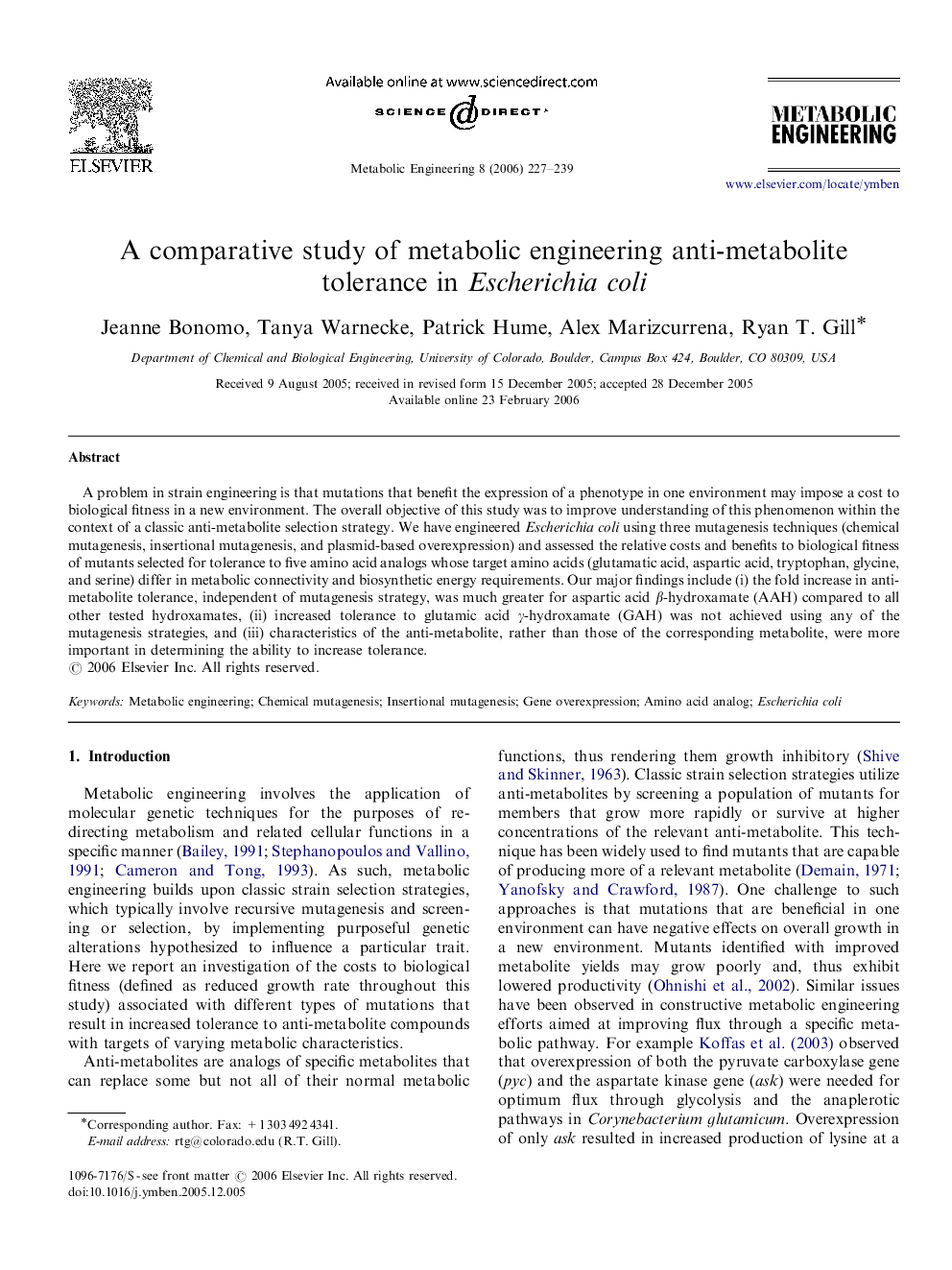| کد مقاله | کد نشریه | سال انتشار | مقاله انگلیسی | نسخه تمام متن |
|---|---|---|---|---|
| 31924 | 44853 | 2006 | 13 صفحه PDF | دانلود رایگان |

A problem in strain engineering is that mutations that benefit the expression of a phenotype in one environment may impose a cost to biological fitness in a new environment. The overall objective of this study was to improve understanding of this phenomenon within the context of a classic anti-metabolite selection strategy. We have engineered Escherichia coli using three mutagenesis techniques (chemical mutagenesis, insertional mutagenesis, and plasmid-based overexpression) and assessed the relative costs and benefits to biological fitness of mutants selected for tolerance to five amino acid analogs whose target amino acids (glutamatic acid, aspartic acid, tryptophan, glycine, and serine) differ in metabolic connectivity and biosynthetic energy requirements. Our major findings include (i) the fold increase in anti-metabolite tolerance, independent of mutagenesis strategy, was much greater for aspartic acid β-hydroxamate (AAH) compared to all other tested hydroxamates, (ii) increased tolerance to glutamic acid γ-hydroxamate (GAH) was not achieved using any of the mutagenesis strategies, and (iii) characteristics of the anti-metabolite, rather than those of the corresponding metabolite, were more important in determining the ability to increase tolerance.
Journal: Metabolic Engineering - Volume 8, Issue 3, May 2006, Pages 227–239